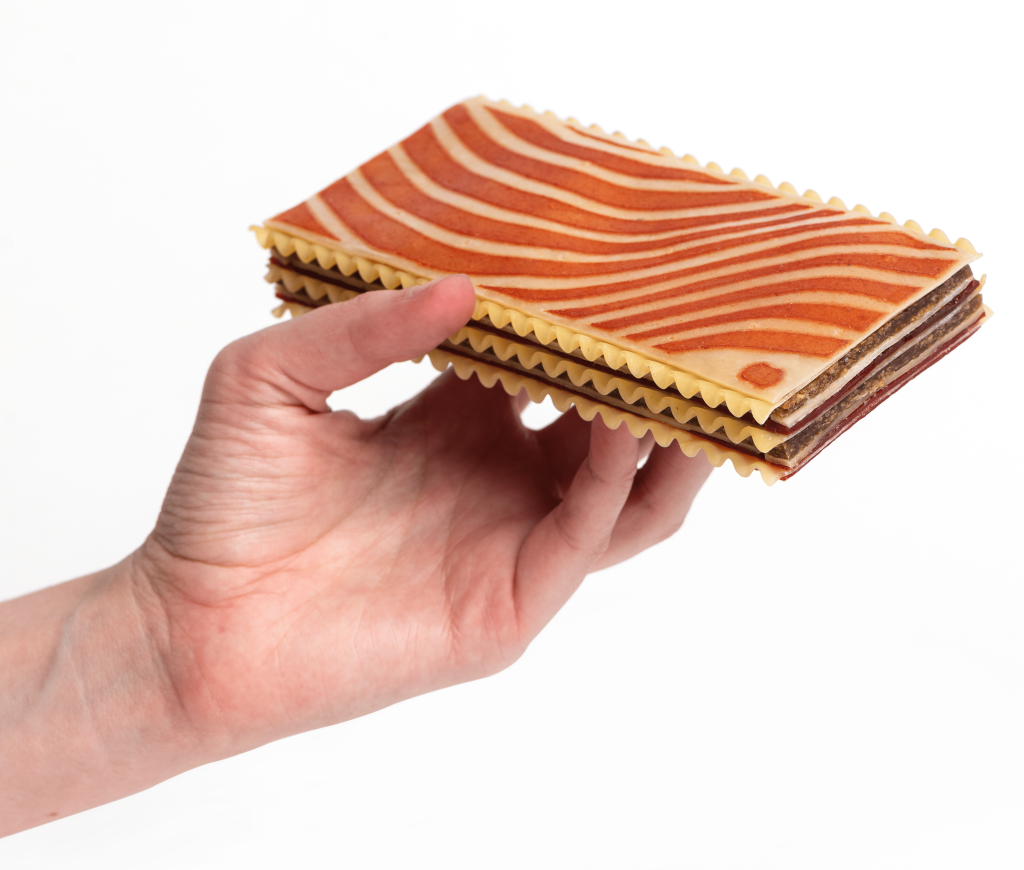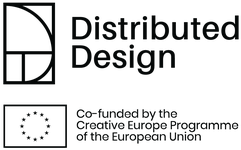Cities are potential engines of the transition towards a circular economy. The City of Amsterdam is one of the early adopters of the circular economy concept at city level. Closed loops, value generation, innovative business models, and modular designs. These are not only principles to guide the transition to circular cities, but also principles distributed designers have been working with for years. In our series Distributed & Regenerative Design, we introduce you to some of the creative talents making an impact. In this article, we interview Naama Nicotra, the industrial designer behind NakedPak, a fun, fully edible replacement for single-use food packaging.
Can you give us a description of your project?
NakedPak series is a line of zero-waste meals which includes vegetable soup, spaghetti with tomato sauce, rice with green Thai curry, lasagna, and ice cream; iconic dishes which are internationally recognisable. The exterior is a soluble bioplastic made of agar and other natural materials. Inside all spices and flavours are included, all you have to do is rinse and cook your meal.
 The meals are not only vegan and zero-waste but the portion size is also taken into account. Where I am from we love to prepare family dinners with lots of food but much of it ends up being thrown away. In the spirit of calculated food I made each meal one portion to make sure it won’t be wasted.
The meals are not only vegan and zero-waste but the portion size is also taken into account. Where I am from we love to prepare family dinners with lots of food but much of it ends up being thrown away. In the spirit of calculated food I made each meal one portion to make sure it won’t be wasted.
In what way is your work regenerative and distributed?
The project offers a new point of view on food packaging. NakedPak is not inventing a new method, it is asking us to take a look at our habits, the way we act with natural packaging, and to extend the mindset to other departments of the supermarket. We don’t mind when an apple, bread or pastries are unwrapped, we simply trust packaging that is made by nature. So why do we stop there? Why don’t we eat an unwrapped meal? I hope that NakedPak can inspire this change.
What drives you personally to work on this project?
The combination of my big love for food, and my anxiety about climate change. I wanted my design to be kind to both humans and the planet. Food packaging is necessary, but what if we take inspiration from nature, where food is packed but no waste remains? Fruits have a peel, this is genius! Then, I was fascinated by the material research. I spent about a year researching recipes from open source websites and YouTube videos, it was all online. I got a lot of advice while making it as well. I met my friends every day and had them try NakedPak. Using their feedback I tried to make products that work with my concept. We eat with our eyes so I took aesthetics into account and I found natural pigments.Taking all that on board, I would cook my meals again and again to find the right flavour and texture.
What steps need to be undertaken to make NakedPak widely available?
We need systemic change. Edible products require a lot of regulations to make something accessible on the market. These rules protect us but they also need to be more flexible to let new solutions in. Also, when it comes to natural materials our selling and delivery method need to be adapted to this. Meanwhile I hope to cooperate with companies who have the materials and patents in order to release NakedPak because I think the world is ready for my product.
How might we make regenerative design the norm?
Regenerative design should be made more accessible. New sustainable design and inventive products sometimes seem privileged. Only specific sections of the population are interested and can afford them. Let’s add a social mission to the products and design for everyone, all genders, all ages, and all disabilities. Let’s try to give everyone the opportunity to take part in this huge effort. It is our job to make our designs affordable, accessible, and responsible.
What is your biggest hope for the future and what can we all start (or stop) doing as of tomorrow to contribute to that?
I hope in the future we can be a bit braver. Us regulators, consumers, designers, we need to try new things and act in a way to be kinder to the planet. The world is changing so quickly and when we stick to our old habits we miss out on the new opportunities, materials, and technologies that change has to offer. So, try something new that you have never had the chance to try, adopt natural habits into your daily life. We need to start with our own lifestyle.
—
Distributed & Regenerative Design is part of our programme for Distributed Design, the exchange and networking hub for the European maker movement. Want to know more about Distributed & Regenerative Design ? Check all the Talent interviews and reserve a spot on Friday, November 4 from 20.00-21.30 in your calendars for our event in Pakhuis de Zwijger.







